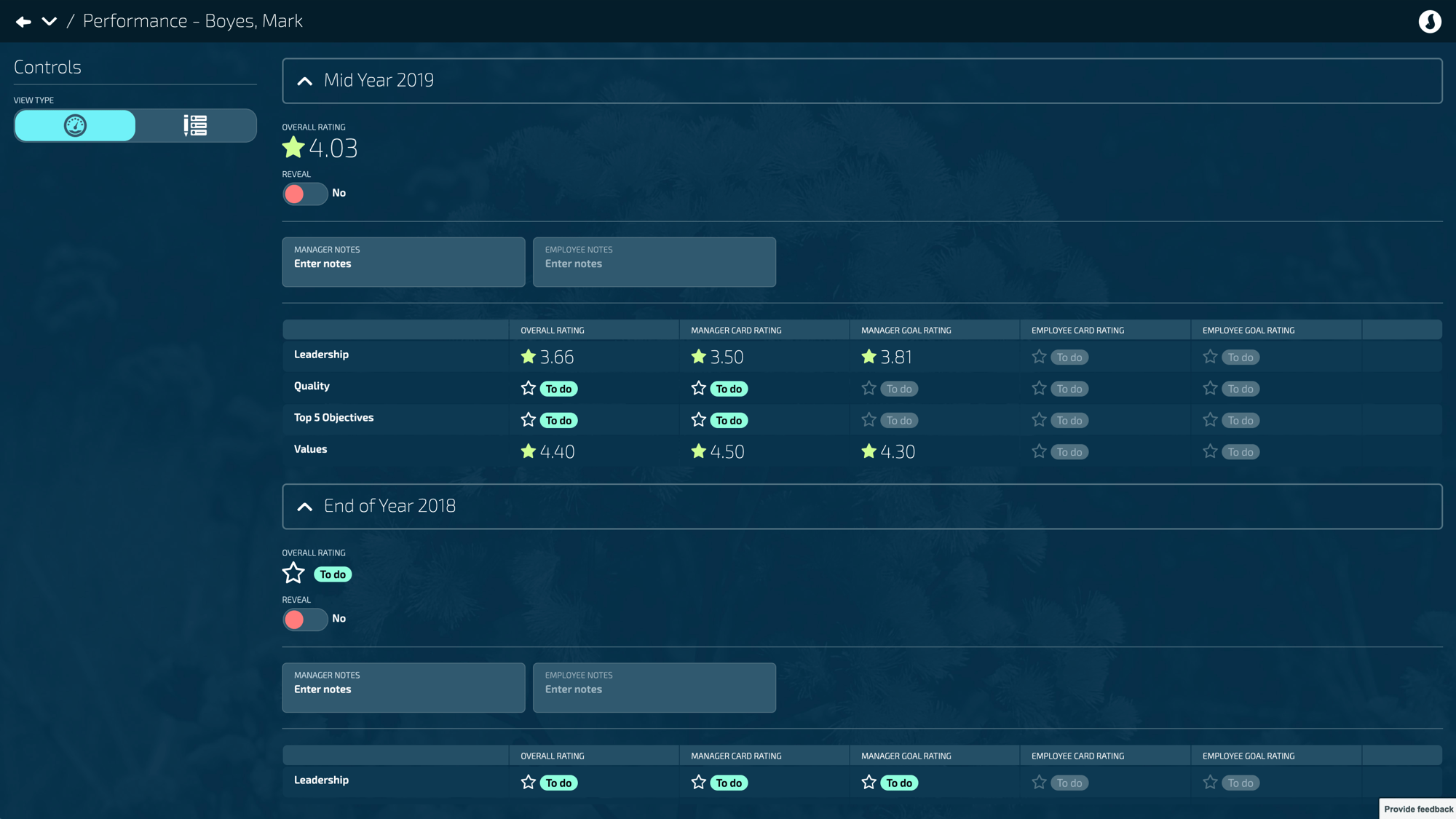The performance review process can be a messy, unhappy one. It’s the source of many a sleepless night for employers, managers and employees alike. But rest easy as it doesn’t have to be that way. With a few tips from our resident Performance Management expert Gabriella, you can turn that bloated runaway monster into zen-like calm with simple processes that bring value to everyone.
Gabriella has been working for many years with organisations of all shapes and sizes to optimise their HR processes. During that time she has encountered hundreds of different approaches to performance review and has helped these companies make what can be a convoluted process into something that’s slick, simple and effective. Here’s Gabriella’s top tips:
1. Performance reviews need a real purpose and objectives
“If I think of all the performance review processes I’ve encountered over the years, the very best ones have one thing in common; they have a clear purpose and are linked directly to the higher level strategic goals of the company.” Gabriella says that it’s so common to see businesses where performance reviews are purely a box ticking exercise. After both employees and managers invest their precious time into this process, the output of the reviews falls into a virtual black hole where it’s never to be seen again. Employees then start to mock ‘review time’ as they know it’s not a procedure to be taken seriously.
This works against the spirit of simplicity and is a missed opportunity. Instead of being a highly useful tool to coach, motivate and reward people for their efforts, it becomes a hollow and half-hearted event once or twice a year.
As a business or organisation, there must be a purpose or end-game for conducting performance reviews, whether they are annual, bi-annual or more frequent than that. A top tip is to ask yourself “what are we trying to achieve by conducting a performance review?”.

There could be many different answers to this such as:
- To continually monitor employee attainment against goals, to reinforce and communicate those goals and to regularly update those goals so they are motivational and realistic
- To give employees an ongoing mechanism to feedback their progress, flag any problems that they regularly encounter and share their growth and training aspirations
- As a means to do ‘high level’ temperature checks across the business - quickly ascertaining employee satisfaction, wellbeing and the ‘mood’ in the business
- As a coaching mechanism - allowing managers to spot high performers, deliver training and development and to fast-track people into other roles where necessary
- To understand the talent and knowledge capital in a business - so the business can plan it’s people needs in the near and longer-term future.
- Ensuring that the performance review process gleans ‘actionable insights’ - that is information that managers, teams and top management can use to make important decisions
It’s crucial that the performance review process is connected closely with the higher level business strategy. It’s also very important that this is well communicated to all those involved in the process - that way people will feel ‘bought in’ and not feel threatened by the process.
2. The bitesize generation needs reviews little and often
Gabriella says that there has been a dramatic culture shift inside and outside of the workplace, especially around how people actually communicate and share information. When was the last time you wrote an essay? Well when you give employees an ‘old-school’ performance review form, that’s in essence what you’re asking them to do.
These days, people are used to communicating in a bitesize way. They share snippets of information on Facebook and SnapChat and talk concisely using enterprise tools like Teams and Slack. This is the Instagram and Twitter generation and we’re not just talking about youngsters. People of all ages use platforms like Twitter and the enforced character count means that the average employee wants to write less and use emojis and GIFs more. Without sounding dramatic, the modern day human has the attention span of an ant.
Therefore, a super way to make performance reviews simple is to make the very act of completing one simple. Little and often wins the day. Instead of asking your people to complete a never-ending form once or twice a year. Allow them to give feedback little and often.
That brings up another weakness of the annual or bi-annual review. It’s a snapshot in time and doesn’t truly reflect performance or employee behaviours in between those dates. The information gets old and outdated very fast. The solution is to give your employees opportunities to demonstrate their effectiveness and value-add on a regular basis. With short and sharp bursts of information sharing and open lines of communication with managers, ‘early warning smoke signals’ are not allowed to build up into problems. By sharing soon and sharing early with each other, managers and employees are happier and know what’s expected of each other.
3. There’s more to performance reviews than just filling in a form
According to Gabriella, the capture of data about performance review in a form or system of some kind is only one half of the story. It’s not the main event. The ‘main act’ is actually the real human-to-human engagement between manager and employee. The real purpose of the performance review is for high quality coaching and mentoring to take place.

It’s easy to note down someone’s performance. But to drive and supercharge performance, and take employees on a journey, the manager needs to look at the business outcomes and ‘there and then’ create an action plan of how to help the person achieve the next stage of that journey. It could be that an employee is over-attaining and needs a more challenging role or stretch goal. It could be an under-performing employee who needs to shadow more experienced members of the team (or who has training and development needs).
Just putting a performance review into an online system is not a silver bullet. It’s what you do with this intelligence that counts. It’s down to the emotional intelligence of the manager to take this information and to be proactive in getting that employee’s performance where it needs to be.
4. Super-easy wins the day
Gabriella already emphasised the importance of sharing bitesize content little and often in point 2 above. Once an employee has that performance information to share, it needs to be simple to document. If you make it easy for people to do the right thing, they’ll do it in spades. A great way to achieve this is by allowing people to share information in a variety of different ways. Mix things up. Completing a rapid piece of performance feedback shouldn’t always mean having to write something. It could mean sharing a rating on a scale. It could be choosing an emoji or colour to sum up how employees feel things went during the last month. Get creative, and see engagement rates skyrocket.
Capturing this type of information on a regular basis allows managers at all levels to quickly ascertain the mood and ‘temperature’ within the organisation. It means you can see how your people feel about their performance in real time. This allows you to intervene early. This is also important for the retention of your most important talent. If they don’t feel challenged or have a problem, you can detect this early on; instead of waiting for the next big review by which point they could have been tempted to join a rival organisation. Finally - ensure you capture data using a system that is user friendly and is easy to login to. We’ll say it again - if you make it easy, people will be on board.
5. Beware of analysis paralysis
Analysing the data from performance reviews is crucial, yet is the most complicated step according to most managers. It can be such a struggle to turn the data into meaningful insights and trends that can be tracked over time. There’s a number of reasons for this. First of all, sometimes too many different metrics or measures of performance are being tracked and instead of being left with a very complete and rich picture, you are actually left with something that is in fact meaningless.

Gabriella says track only what is absolutely fundamental - keep things simple and elegant. Secondly, so many performance reviews are uploaded into Excel spreadsheets and let’s face it, Excel isn’t everybody’s strong point. So many people at all levels on organisations don’t actually know how to turn raw scores and data into meaningful metrics. Having software that automates this can be a big help (in fact it’s a point we will cover shortly).
The fundamental objective of your performance reviews is normally to give managers, directors and HR professionals a deep understanding of the human resources and talent in the organisation. It’s there to answer questions such as ‘do we have the right team in your company to hit our business goals in the second half of this year?’. Therefore, it’s essential that you are able to glean high level information that enables you and your fellow team members to make informed decisions (e.g. to promote people, to hire additional people and to send some people for advanced executive training for example).
Organisations really fall down with being able to understand and interpret the data - once the metrics are accurate and loud and clear for all to see, it makes such a difference.
6. Let your software do the heavy lifting for you
Managers and employees should be spending their time on the crucial ‘jobs to be done’ in the organisation. For those in HR, they need to dedicate their time to coaching, hiring and the myriad other responsibilities. The very act of conducting performance reviews should not become an unwanted distraction and an unwieldy process that takes an unfair amount of time.
The truth is, Performance Management Software is available that makes the performance review process into a straightforward, repeatable and scalable process. With the right software, out go the manual spreadsheets and you can say goodbye to tearing your hair out. These online platforms diarise reviews, automate the data capture and systemise those regular in-person meetings that cement the relationship between manager and employee. You should consider something that can be accessed remotely by anyone, from anywhere to serve the needs of the physically distributed, hybrid workforce that is so common today.
It goes without saying, choose something that’s simple for all to use, especially a platform that allows people to share ‘bitesize’ pieces of feedback regularly. Most importantly, choose Performance Review Software that does the heavy lifting for you - taking that raw data and turning it into meaningful insights that tell you how your organisation is progressing against its most important high level goals, objectives and strategies. Then you most certainly will have a recipe for success.
In conclusion
As Gabriella has explained, the performance review process can be a fraught one. It has the potential to be ‘unwieldy’ and unnecessary complex. But, with some high level planning and a real purpose behind these reviews, you can make this human resources staple really work for your organisation, enhancing the employee experience, equipping managers with the insight needed to fulfil their coaching and development role and ultimately giving senior managers the high level insights needed to plan HR and talent requirements into the future.

Make Talent & Performance Management a positive, engaging experience
- Intuitive drag & drop interface
- Collaborative and inviting
- Prompted and monitored using AI
- Automatically align and track goals & aspirations with training and support
- Cultivate personal investment for greater employee engagement
Explore more
Share this page
Ready to transform your HR & Payroll process?




